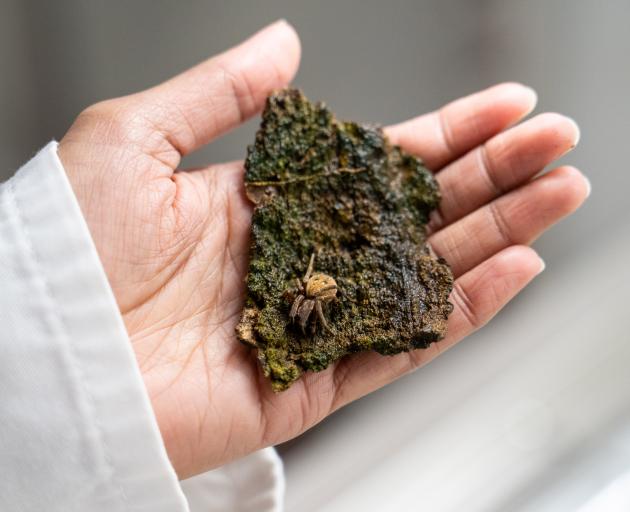Science
Parasitic Worms Turn Spiders into ‘Zombie’ Hosts in New Zealand

A fascinating and troubling phenomenon is unfolding in New Zealand, where parasitic worms known as mermithids are transforming spiders into what researchers describe as “zombies.” PhD student Usha Mendis from Lincoln University is investigating the impact of these nematodes on local spider populations, raising concerns about the implications for the ecosystem.
Mermithids target various invertebrates, including caddisflies, mayflies, and grasshoppers, but their effect on spiders, particularly New Zealand’s endemic species, is particularly alarming. Mendis has identified three different types of spiders infected by these parasites and is working to determine the exact species affected and the specific nematode responsible. With over 90% of New Zealand’s spider species being endemic, any disruption to these populations could have dire consequences for the country’s biodiversity.
“Spiders hold a special place in the food chain,” Mendis explained. “When the worms take over, it flips that idea on its head. The parasite completely changes it; the spiders aren’t filling their normal role.” The process is slow and ultimately fatal for the spider, leading to significant alterations in their physical appearance. Infected spiders often exhibit larger limbs, swollen abdomens, and other abnormal characteristics.
Identifying a parasitized spider can be challenging. “The only real way to tell is to wait until the spider dies and the nematode emerges,” Mendis noted. Researchers have a grasp on how the nematodes exit their hosts, but the entry process remains a mystery. Mendis is diligently working to uncover how these parasites infiltrate spiders in the first place.
The life cycle of the mermithids is tightly knit to their spider hosts. “They can’t live without a host. They consume the energy and nutrients of the host and grow inside it,” Mendis explained. The nematodes require moisture to progress, which drives the infected spiders to seek out water. This behavior often leads to spiders being found drowned.
Collecting these nematodes for study presents its own set of challenges. Mendis is employing water traps to gather samples, aiming to better understand the relationship between the mermithids and their spider hosts. Despite the fact that mermithids were first reported in New Zealand only 35 years ago, significant research remains to be done before the full implications of this parasitic relationship are understood.
As Mendis continues her research, she emphasizes the importance of reconsidering perceptions of spiders. “Spiders may look disruptive and creepy, but they’re not the enemy. They’ve got their own problems to deal with,” she said. The delicate balance of New Zealand’s ecosystem hinges on understanding these interactions and protecting the species that play crucial roles within it.
-

 World6 days ago
World6 days agoPrivate Funeral Held for Dean Field and His Three Children
-

 Top Stories1 week ago
Top Stories1 week agoFuneral Planned for Field Siblings After Tragic House Fire
-

 Sports3 months ago
Sports3 months agoNetball New Zealand Stands Down Dame Noeline Taurua for Series
-

 Entertainment3 months ago
Entertainment3 months agoTributes Pour In for Lachlan Rofe, Reality Star, Dead at 47
-

 Entertainment2 months ago
Entertainment2 months agoNew ‘Maverick’ Chaser Joins Beat the Chasers Season Finale
-

 Sports3 months ago
Sports3 months agoSilver Ferns Legend Laura Langman Criticizes Team’s Attitude
-

 Sports4 weeks ago
Sports4 weeks agoEli Katoa Rushed to Hospital After Sideline Incident During Match
-

 Politics2 months ago
Politics2 months agoNetball NZ Calls for Respect Amid Dame Taurua’s Standoff
-

 World2 weeks ago
World2 weeks agoInvestigation Underway in Tragic Sanson House Fire Involving Family
-

 Entertainment3 months ago
Entertainment3 months agoKhloe Kardashian Embraces Innovative Stem Cell Therapy in Mexico
-

 Sports4 weeks ago
Sports4 weeks agoJamie Melham Triumphs Over Husband Ben in Melbourne Cup Victory
-

 World4 months ago
World4 months agoPolice Arrest Multiple Individuals During Funeral for Zain Taikato-Fox



















